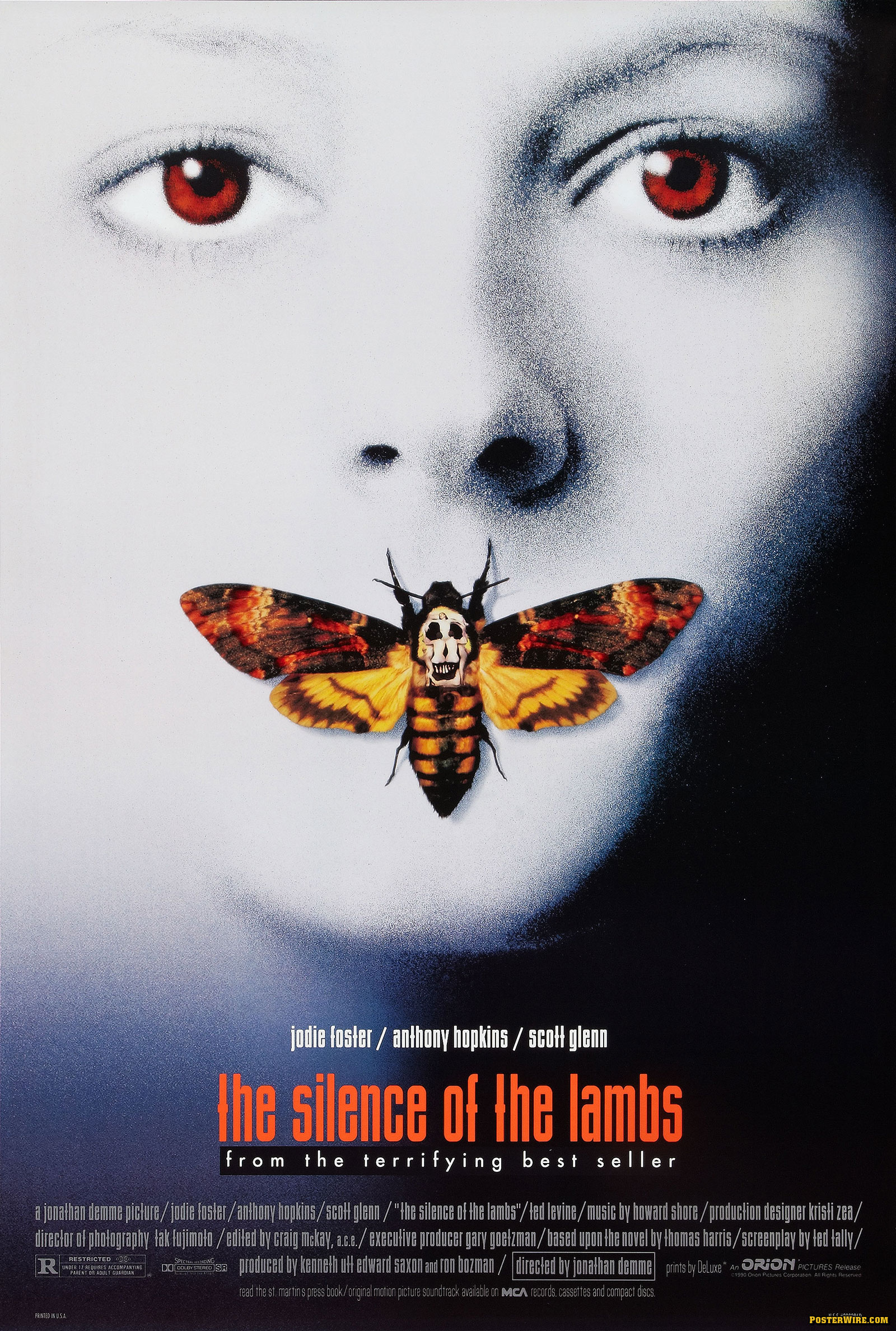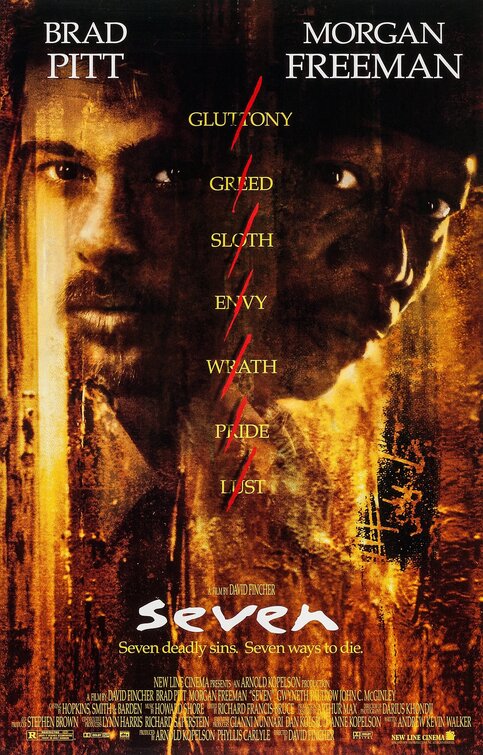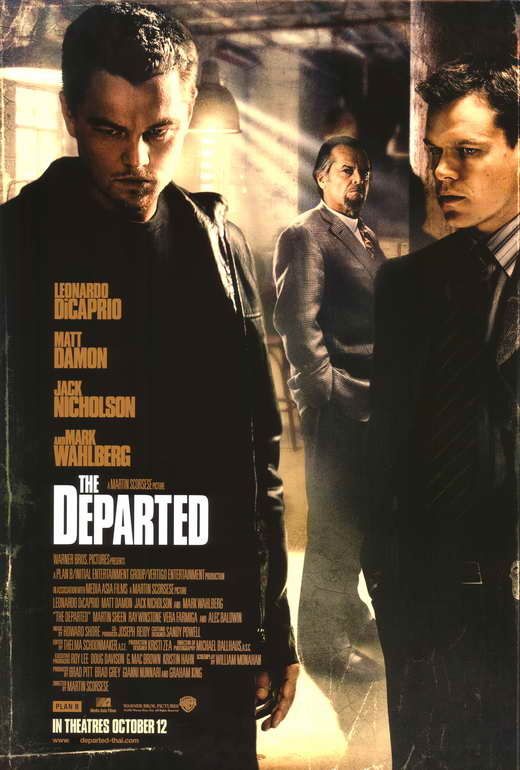In the opening of a
thriller, it usually sets up and follows the rules and conventions of the
stereotypical genre. In the openings of the five films, Inception, Kill Bill,
Shutter Island, The Usual Suspects and The Girl with the Dragon Tattoo, they
all use common features and devices used in typical thriller movies.
Shutter Island
The opening of the movie is very
stereotypical of the thriller genre, the mise-en-scene uses dark colouring and
lighting to set the scene, a boat is used to appear from the mist, giving an
element of mystery, which would set up enigma, making the audience ask
questions as to what the boat is or where it's going.A prop of chains is used
which connotes ideas of being trapped. The first view we see of the character
Teddy, the camera takes an objective view, using a close up of his face, to
introduce the character, we see him in an obvious struggle with his mentality,
Teddy is wearing a typical detective outfit from the 1950's. When he mentions
the woman he was in love with, the editing frequency increases to match up with
his emotional state, using straight cuts, with a high frequency. this is
usually linked with thriller movies to create anticipation and give
characterisation of the character.
The opening is set on a boat, which creates a sense of
enigma as the audience do not know where the boat is going, however the props
and setting used view it as a dangerous boat, probably a prison boat as props
such as handcuffs and chains and metal objects are hanging from the ceiling, we
see this with a long shot of Teddy which shows him within his surroundings.
this setting is typical of a thriller as it is set in an unusual location to
create mystery to the audience.
When the island is first shown the non diegetic soundtrack
could suggest to the audience the dangers of the island, a low angle shot is
used to make it seem slightly intimidating, along with the music creates the
atmosphere of danger. this is a common technique used in thrillers, through the
use of sound, can show moods such as danger or tension.
The soldiers on the island are shown carrying prop guns, to
look intimidating, this is also put together with the non diegetic soundtrack
using violins of instruments which creates the atmosphere of tension.
Overall the opening of shutter island creates enigma and
mystery to the audience making them ask questions, using stereotypical
conventions of the thriller genre, such as using unfamiliar locations and the
soundtrack and dialogue to create danger or apprehension within a situation.
Dull colouring and dull grey lighting creates a desolate atmosphere.
Inception
The opening of the film gives off a disorientating feel,
with a slow-motion shot on the waves rolling into a beach. Straight cuts are
used to jump between the main character who has been washed up on the beach,
and slow motion camera shots of children playing on the beach, this also uses
depth of field with the camera going in and out of focus, reflecting the main
characters emotions. The coloring is a vivid realistic color, which makes it
seem disorientating and almost dream-like, experiencing the main characters
feelings and emotions through the camera movement and coloring. The
disorientating feel to the audience is very typical of the thriller genre.
The fast editing frequency
between the children playing in the sand, to the character first waking up
which is used with the faded disorientated diegetic sounds of the children,
this is not typical of the usual thriller genre, as although it creates enigma
as to who the man is and why he has been washed up on the beach, the children
playing is a visual code of reality and connotes ideas of happiness, which is
not usually used in thriller films.
We then see the main character revealed to be carrying a
prop of a gun, This is the use of restricted narration, which is commonly used
in thriller films, usually used to create mystery or shock, the restricted
narration is used to create enigma to the audience as to why he has a gun and
who he is.
Restricted narration is then used to hide the identity of a
character, when we first see him, a MCU of the back of his head is shown, from
his surroundings we can tell he is wealthy, and we are in a foreign country,
this is usually common for thriller films, being set in unusual countries so it
is unknown to the audience. By showing the back of his head it creates mystery
as to who the character is and what he does, and his importance to the man from
the beach. this is a common feature used in thriller films, hiding identities
of characters to hide their importance and create mystery around the
characters.
One of the typical conventions of a thriller is having
someone with dehumanizing features, When the man who had his facial identity
hidden reveals his face, he is presented with dehumanizing features, with his
body language as 'lifeless' and slow, and his eyes dull. He is characterised in
this sequence as a powerful man.
The colouring and lighting in this sequence is dull while
using yellow colours, to make it seem unrealistic, which is a common feature of
thriller films.
Overall in the film Inception it uses common features of
thriller films such as restricted narration, using the colouring and lighting
to create unrealistic effects and dehumanizing characters, also the use of
camerawork and editing to match the characters emotions to create a
disorientating feel, while using the sound to add to the realistic or
unrealistic disorientation.
The Girl with the Dragon Tattoo
The film opens with a camera pan around a snowy lake, the
setting is dull and grey, which is a usual convention of a thriller film's
mise-en-scene. This can suggest we are in a foreign country as the house shown
is not of English house plan, along with the trees and snow, which suggests a
foreign country, this a common feature used in thriller films to use a foreign
location to create enigma to the audience.
A soundbridge is used of a phone ringing, which suggests to
the audience, that the phone ringing is from inside the house. The camera cuts
to a man picking up the phone, where he begins to talk, the volume of the phone
call has been turned up and we can hear both sides of the conversation, however
it uses restricted narration, a shot reverse shot is shown between the two men
although the location of the man hiding the painting is unknown, this creates
enigma as we do not understand the dialogue. A high angle CU is used as
restricted narration, creating mystery as to what the man is looking at.
The opening is different from usual thrillers as it uses a
lot of dialogue which is not common in thriller films.
The non diegetic soundtrack creates mood and atmosphere, the
instruments used such as piano or a mechanical music box creates a tense
atmosphere which is a common feature in thriller films. the tempo increases as
the man walks away from the painting, creating tension and enigma. The reveal of the painting creates mystery to
the audience as well as the characters, as they do not know what it means.
Overall The Girl in the Dragon Tattoo uses certain aspects
of stereotypical thrillers, but does not fit with the genre as it does not use
fast paced editing to create emotion or mood, long takes and edits are used.
the soundtrack is used to create enigma along with the camerawork, with the use
of the high angle shot to cover the painting. the grey dull colouring and
lighting shows typical aspects of the thriller genre, creating a dull mood.
Kill Bill
The opening of Kill Bill is very stereotypical of a thriller
film. It begins with a CU of a woman covered in blood, breathing heavily in
fear. The use of blood is very stereotypical in a thriller film although
commonly it is used in horror, smaller injuries like facial cuts, thrillers
rarely show gore, usually blood stains are shown. Kill Bill is a main example
of showing minor injuries which is stereotypical of a thriller film.
The film then uses restricted narration as the identity of
the male is not shown, we only see his shoes walking towards the victim, the
audible diegetic sounds of his footsteps are maximized in volume which creates
emphasis on her fear and creates mystery as to who is walking towards her. His
shoes are the only things we see, the camera never shows his face, which is
typical of a thriller, hiding the identity of the killer.
We then see his handkerchief with the name 'Bill' printed,
the slow paced editing gives emphasis on his movements, the long take on her
face shows us her fear. This gives the audience information on the identity of
the killer but still creates the enigma of who he is.
No sound is used apart from ambient sound and the dialogue
of 'Bill' talking and the diegetic sounds of him pulling out his weapon to kill
her. This can be unusual for a thriller as no music is used to create mood.
As the film is shot in black and white, the use of lighting
and shadows set the tone and mood. a MCU shot is shown of the silhouette of the
body, which is used to show the aftermath and her death.
Overall in the film Kill Bill, it uses a low editing
frequency to show emotions and movements, and it uses restricted narration to
hide the identity of the killer. the camerawork is simplistic which is common
of a thriller film, the mise-en-scene shows Bill as wealthy with heeled boots,
which during the time the movie was set, only wealthy men would wear them and
he also owns an embroidered handkerchief which was usually owned or done by the
wealthy.
The Usual Suspects
In the opening of
the Usual Suspects it starts with an Extreme Close Up of a match being lit.
Fire connotes ideas of danger which sets up the scene, we see a man light up a
cigarette, the camera then cuts to an petrol tank spilling out the fuel, the
camerawork uses a tracking shot on the liquid, the man then drops his lit
matches onto the line of fuel, The camera then tracks the movement of the
flame, and reveals the bodies lying on the floor, this creates mystery in the
extract and leaves the audience asking questions as to why there are dead
bodies on the boat.
Using an eyeline match we are then introduced to a new
character, the camerawork using restricted narration never shows his face, he
is seen up to his neck, this creates enigma to the audience as the identity of
the man is never revealed. This is typical of the thriller genre as it leaves
mystery to the audience.
The camera work uses a lot of depth of field to focus on the
character within his surroundings.
The antagonist then lights his lighter, in this film fire is
used to connote the killing and the dangers of the villain. this is common in
most thriller films for things to signify or have a meaning, as it usually
communicates to the audience.
The lighting within the whole setting is dark and dim, with
little lighting, dark misted weather is shown which uses the idea of pathetic
fallacy, the personification of the weather within a situation so as an
audience we expect bad things to happen in the bad weather.
The soundtrack used creates tension by the use of violins
and the use of an off screen gunshot noise gives power to the faceless man, as
we assume the other male is dead.
A dissolve is used and a graphic match from the ropes to a
logo, and we are now in an interrogation room, we can tell this through the
county state logo behind the man which sets the story back to a few weeks ago,
going back in time, the relevance of the character is emphasised as there is
low lighting, with a bright white light on the man in question.
The usual suspects
is typical for a thriller as it uses the enigma codes, through camerawork and
editing, the sound used creates tension, and the mise en scene creates or
reveals characters or hides characters.


















